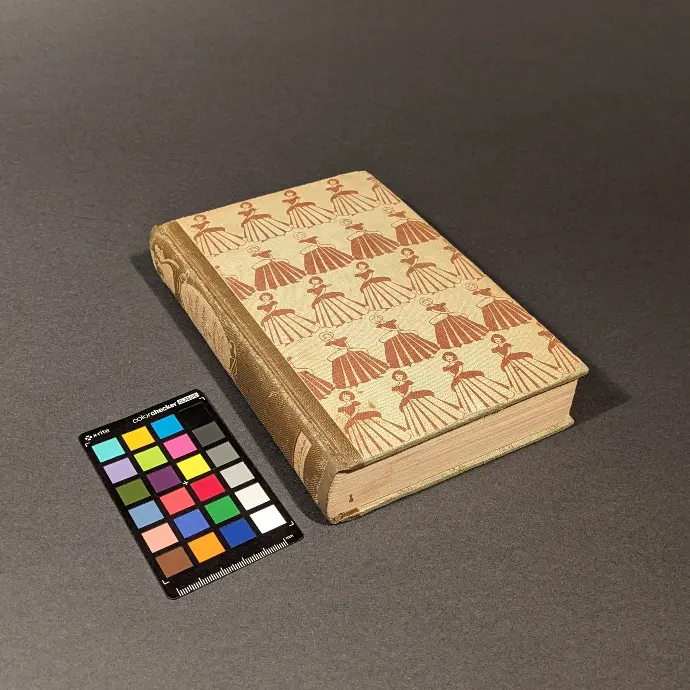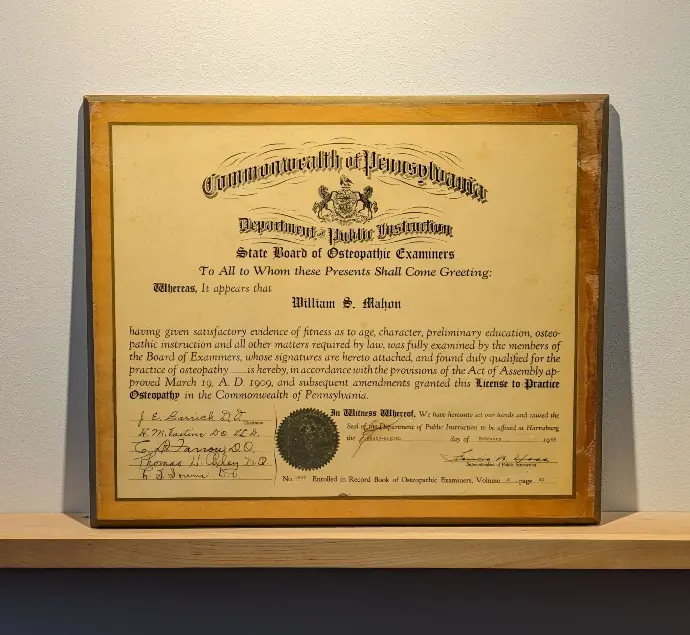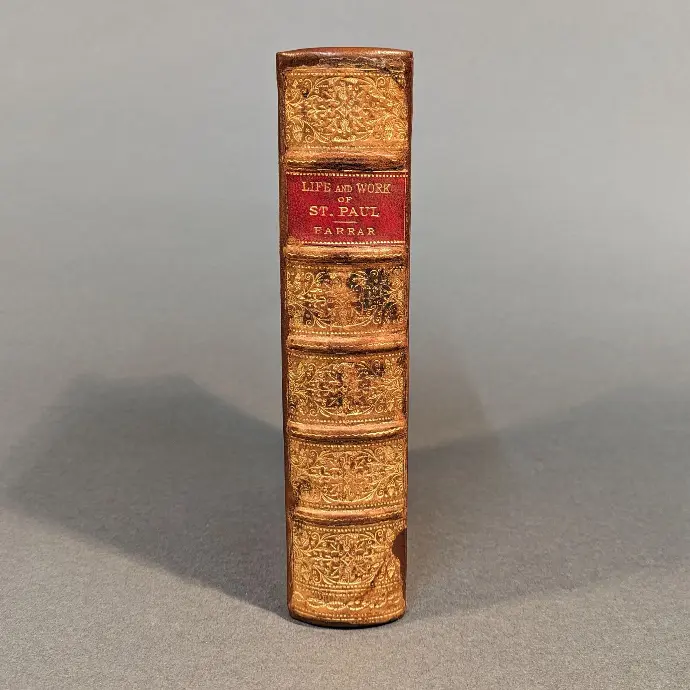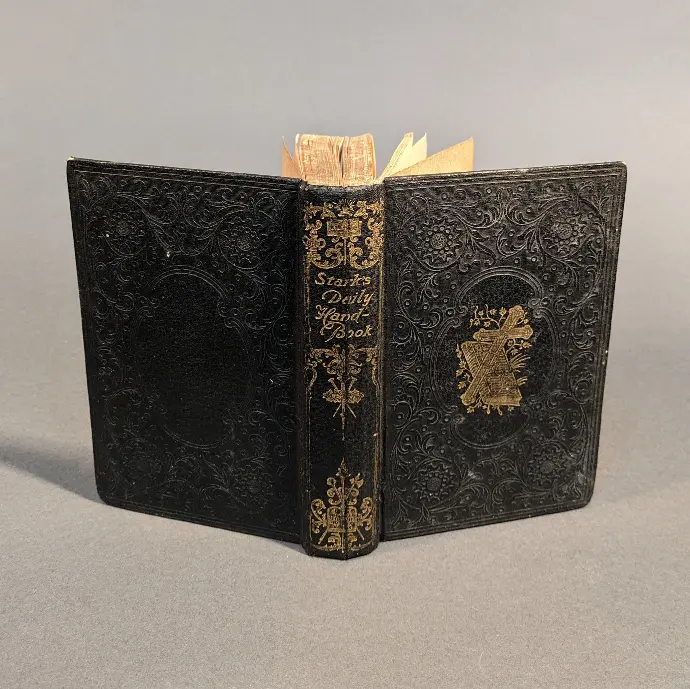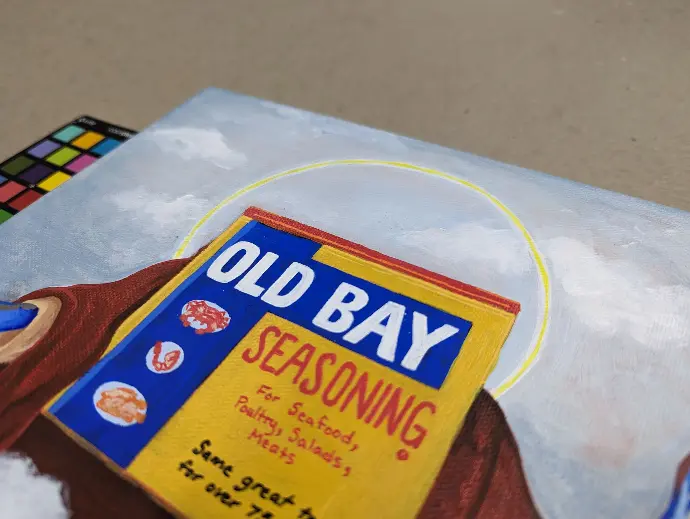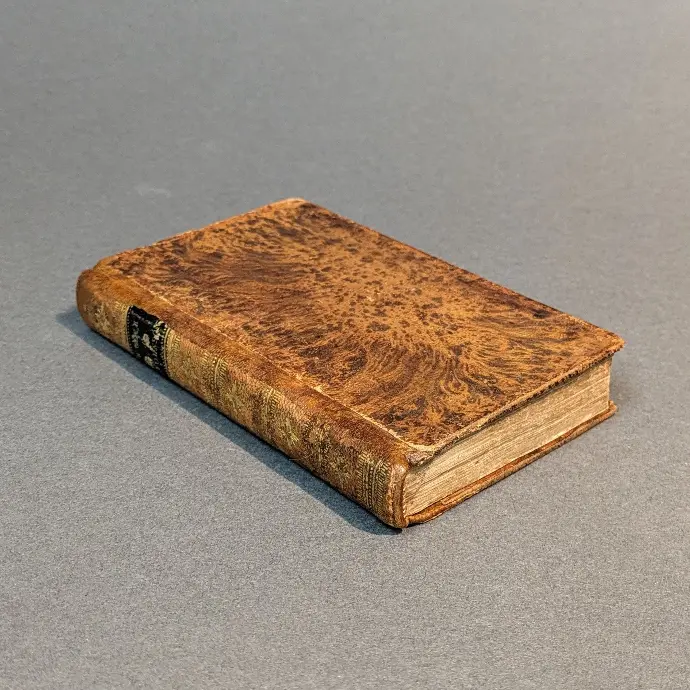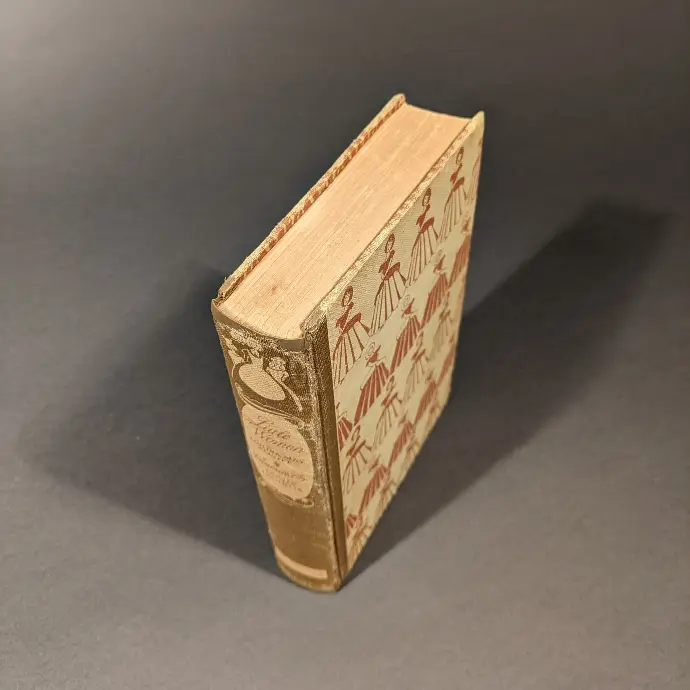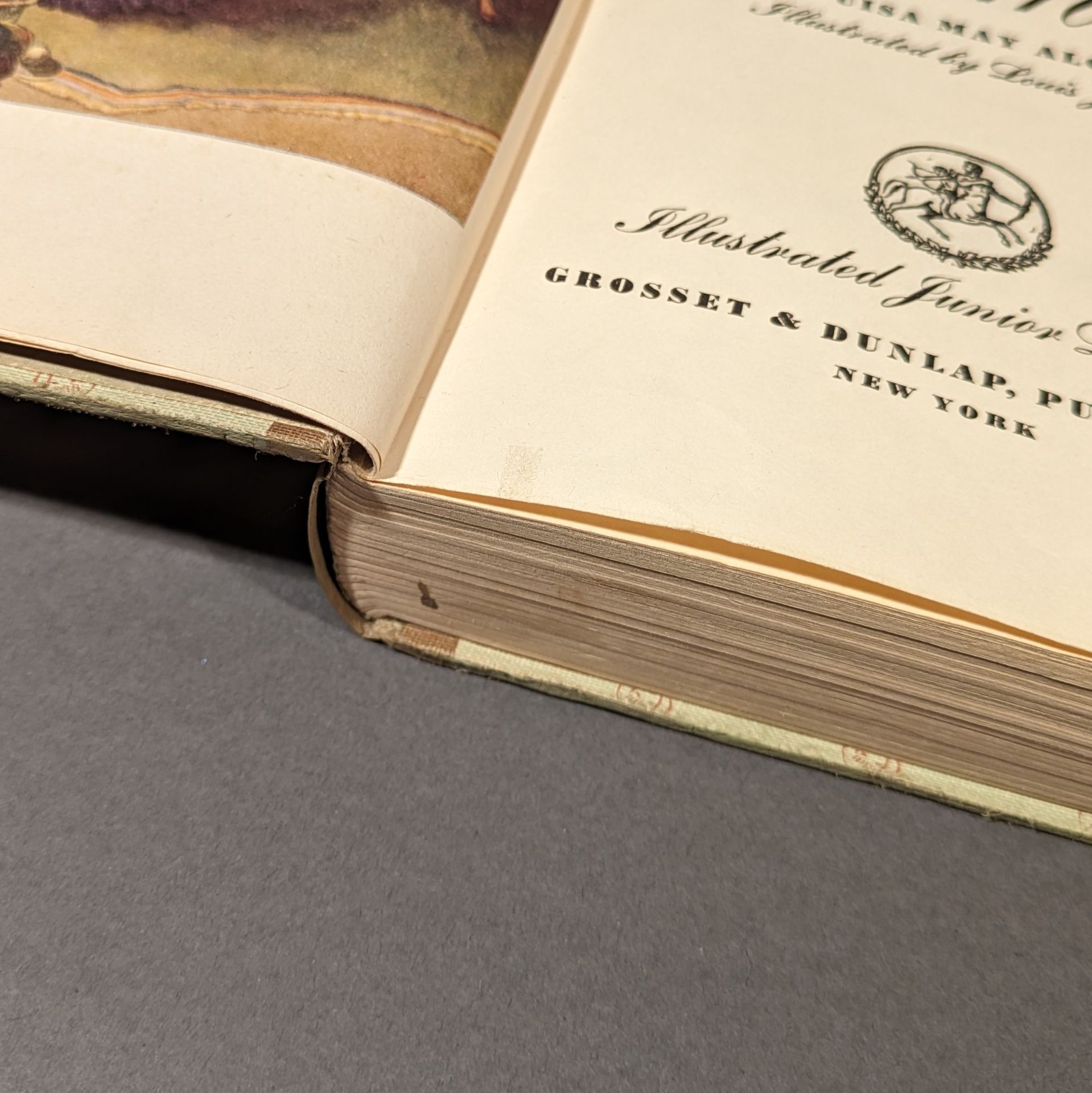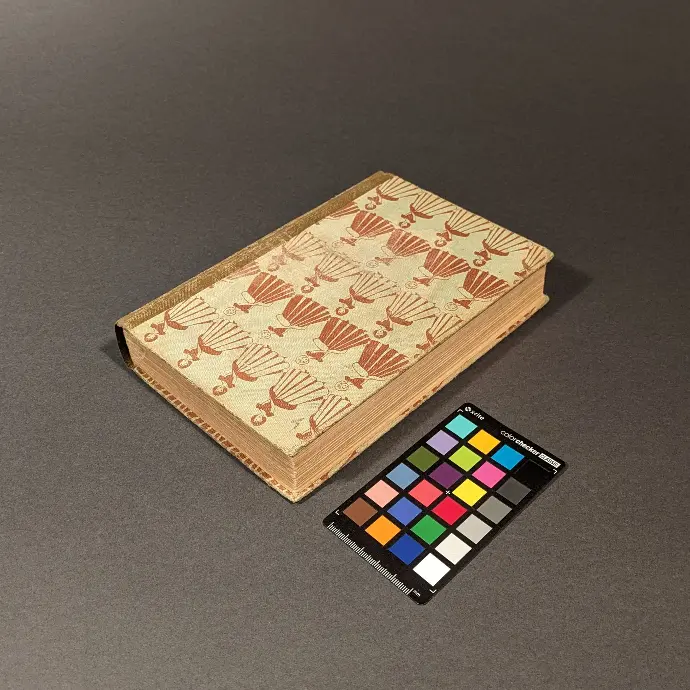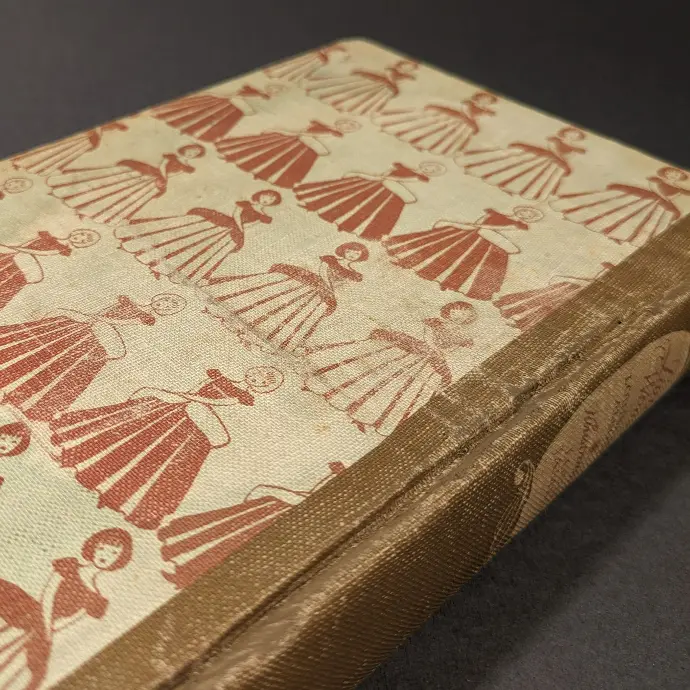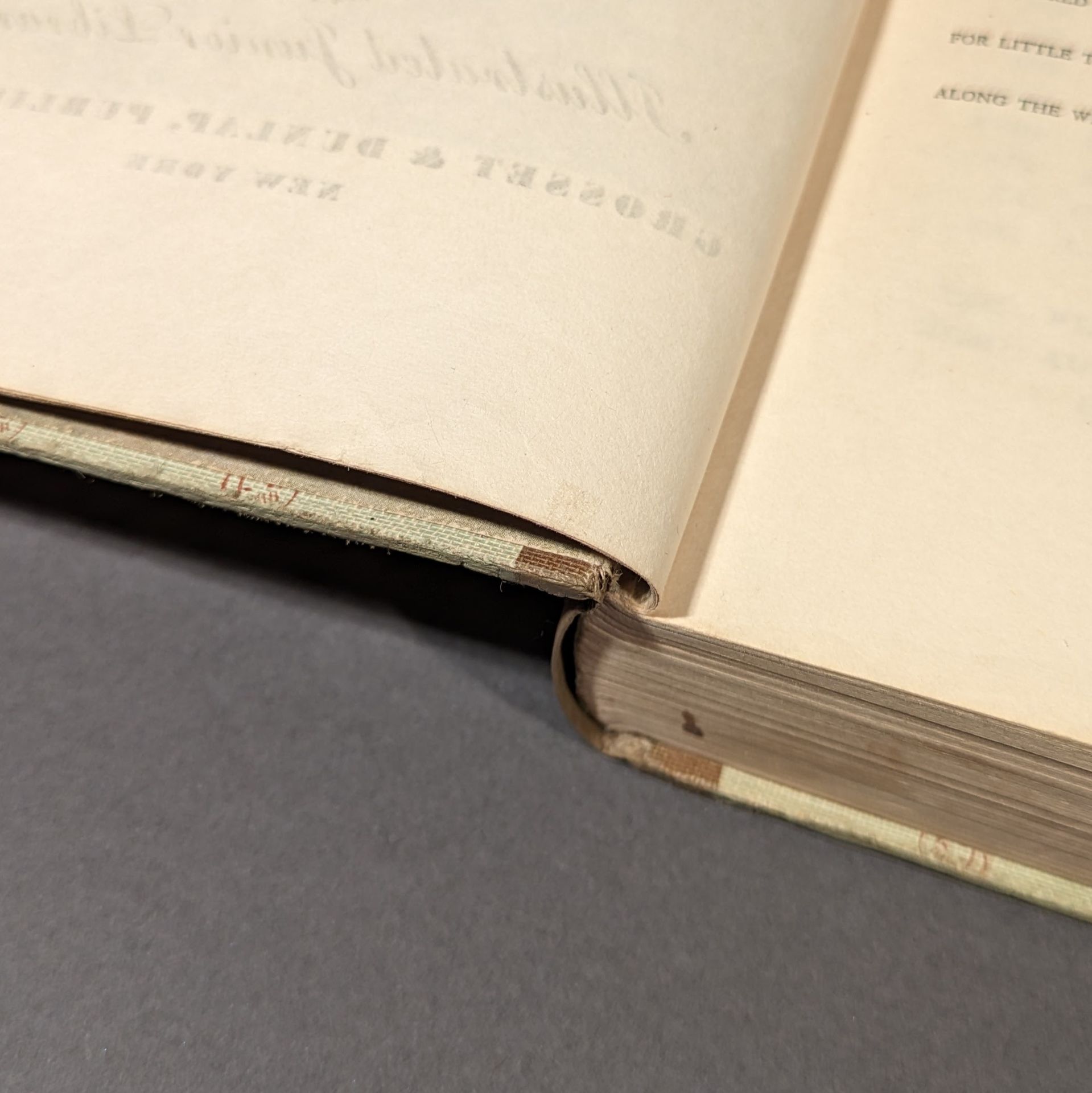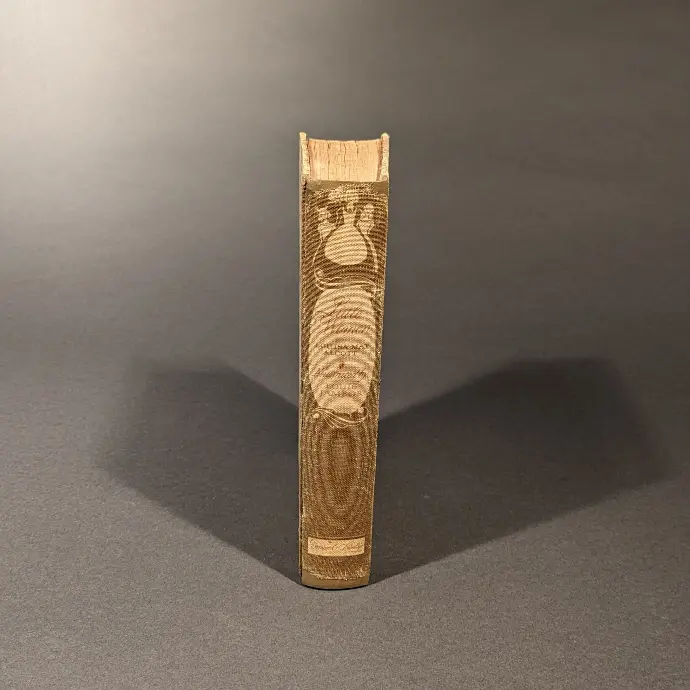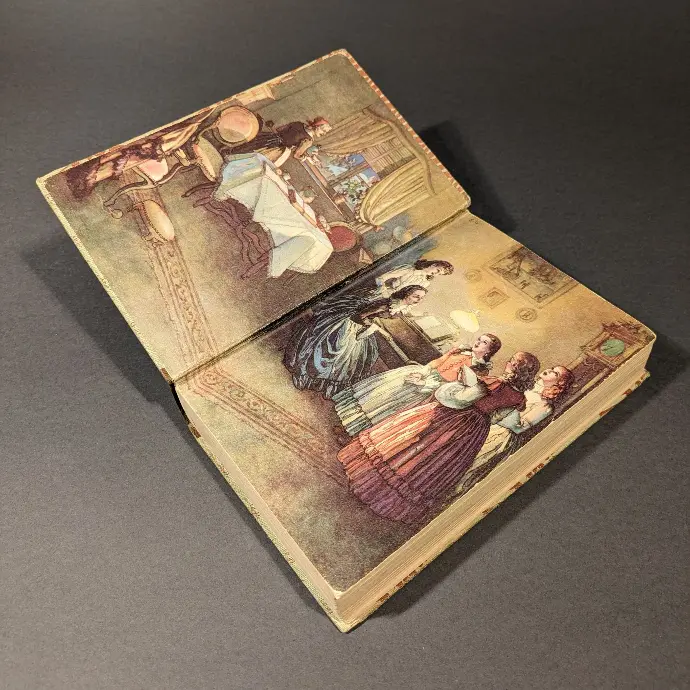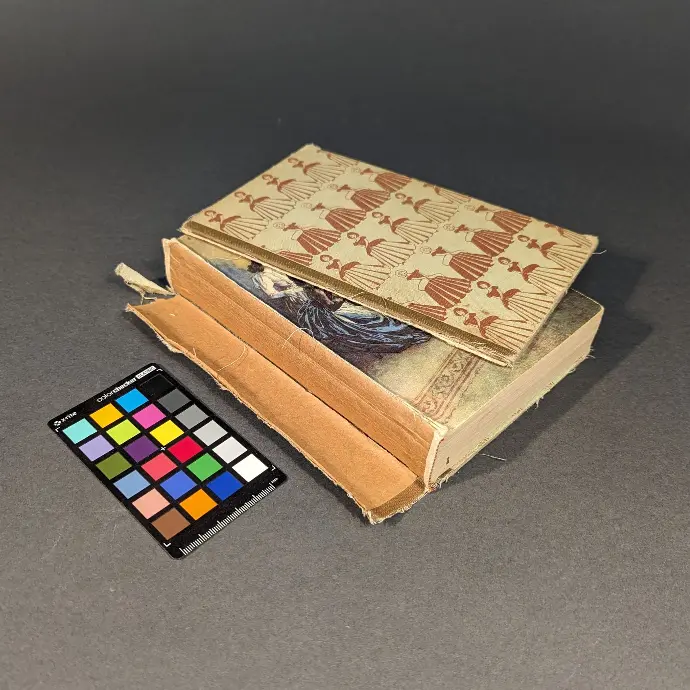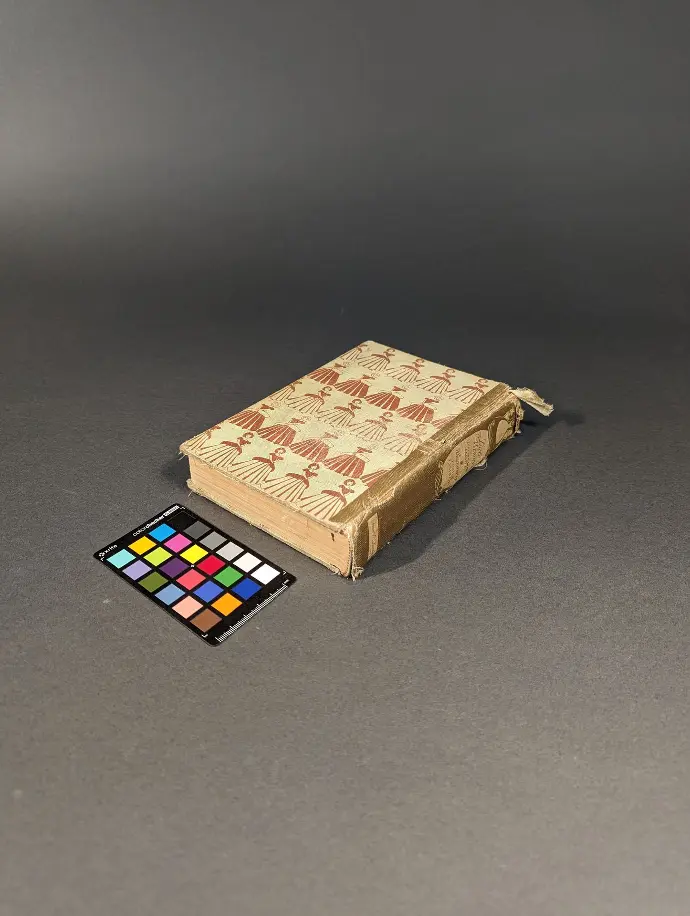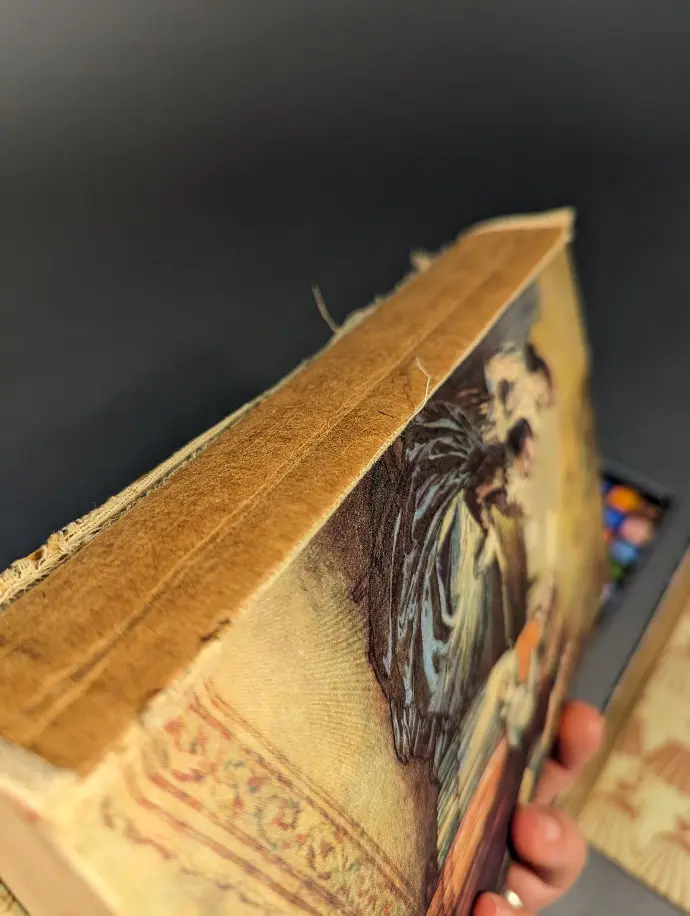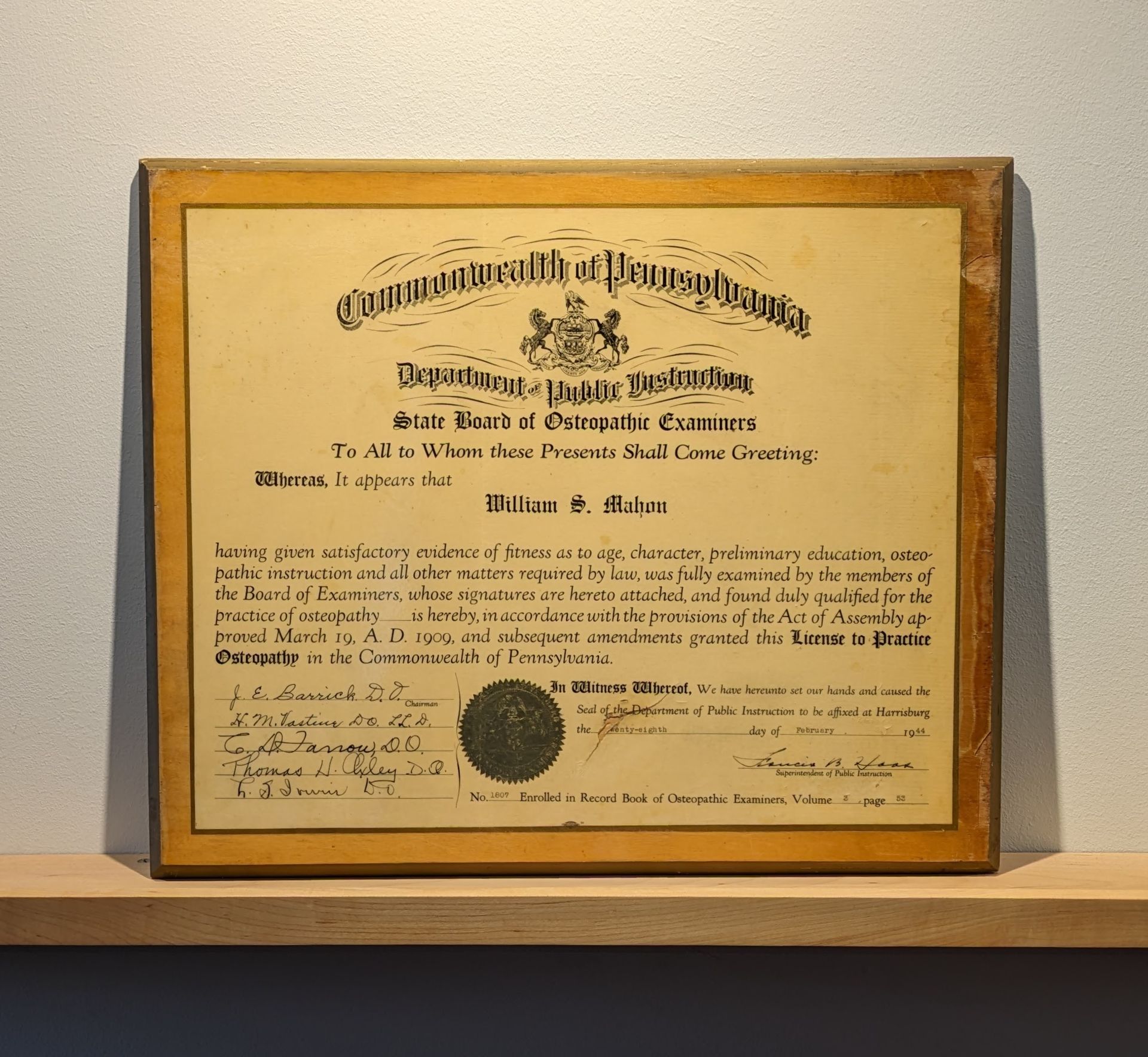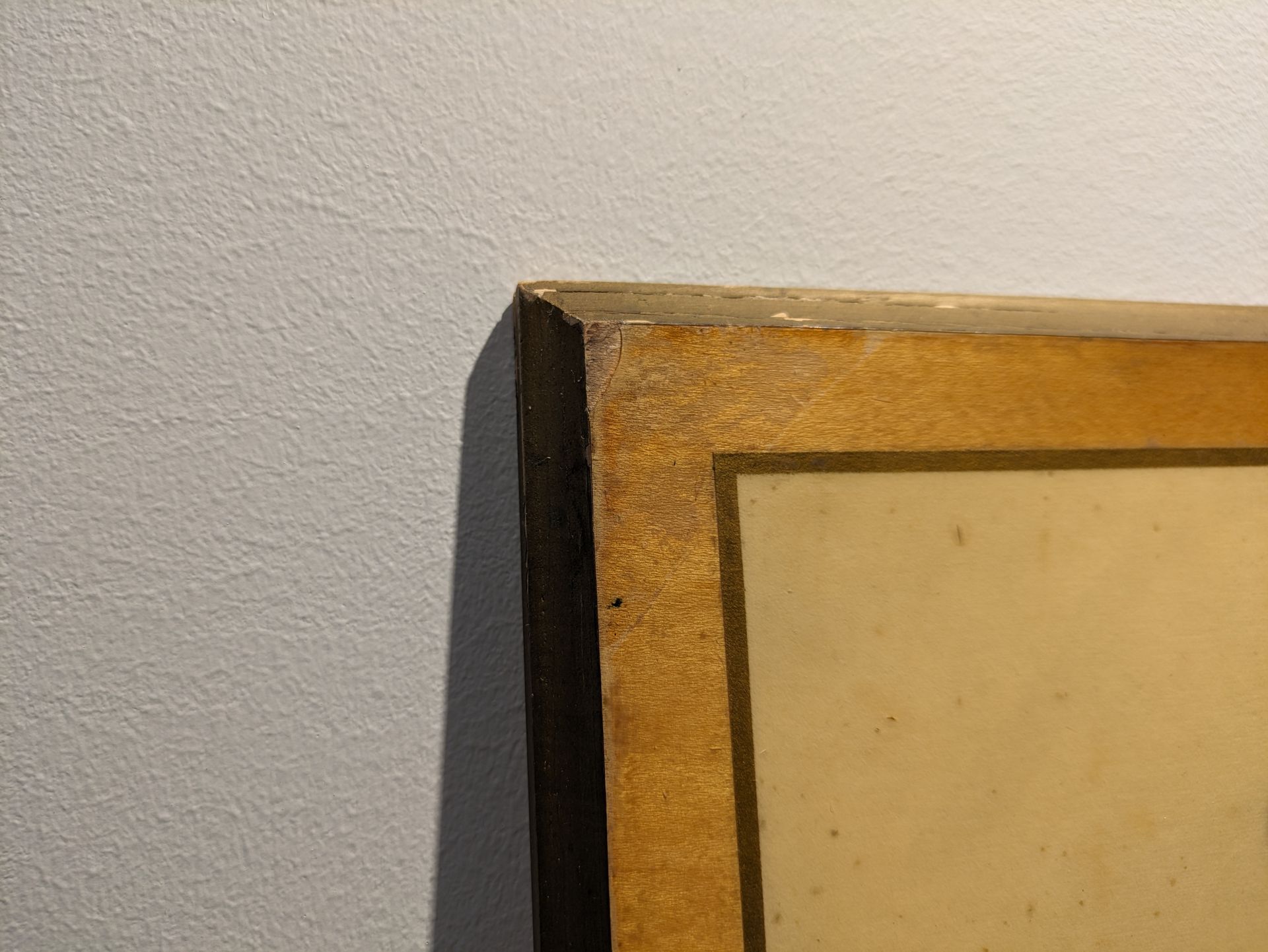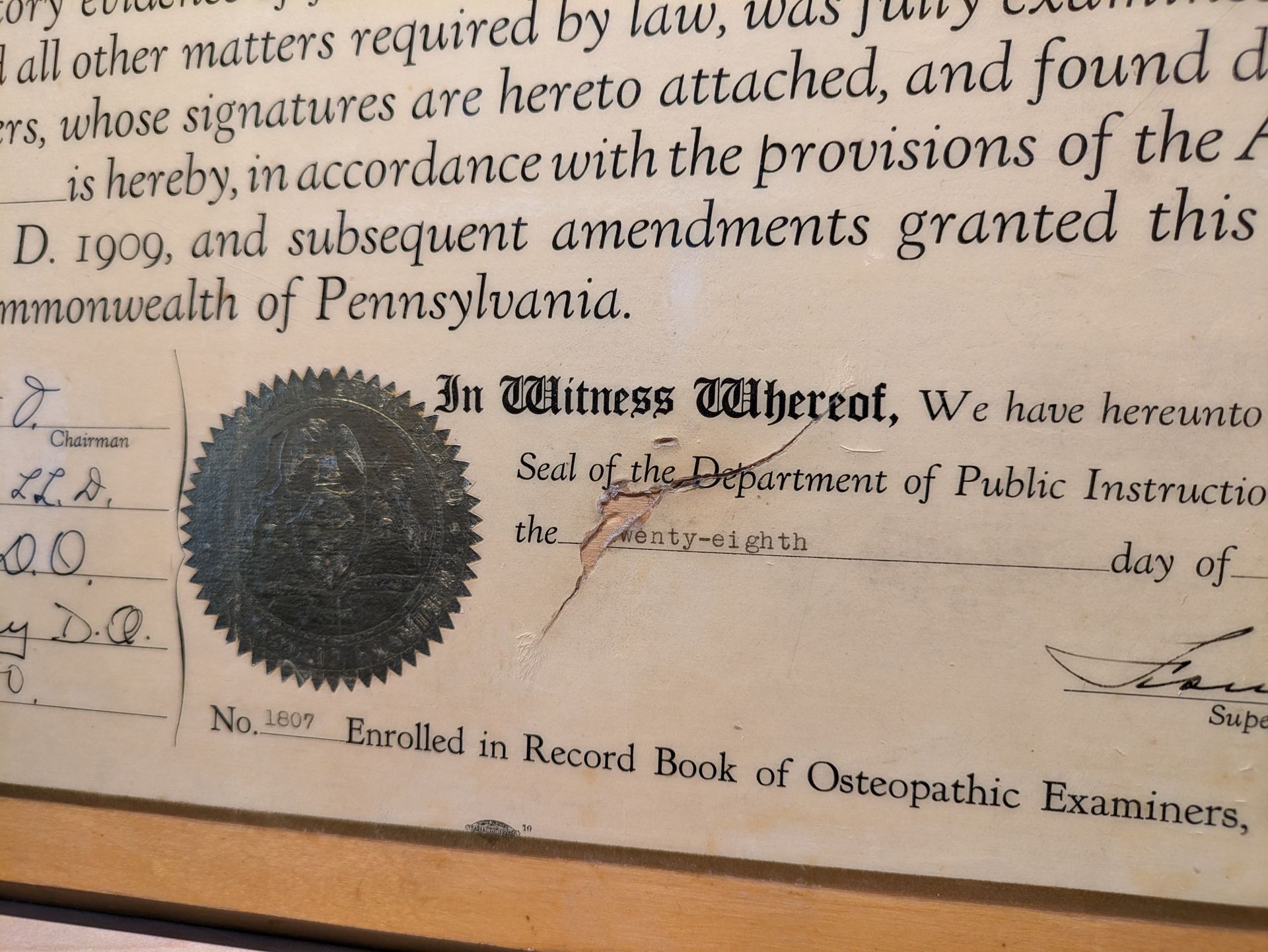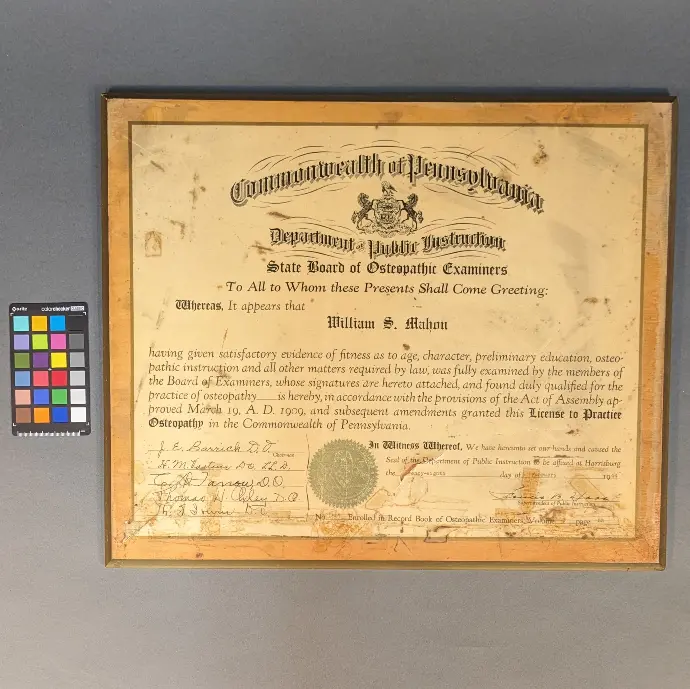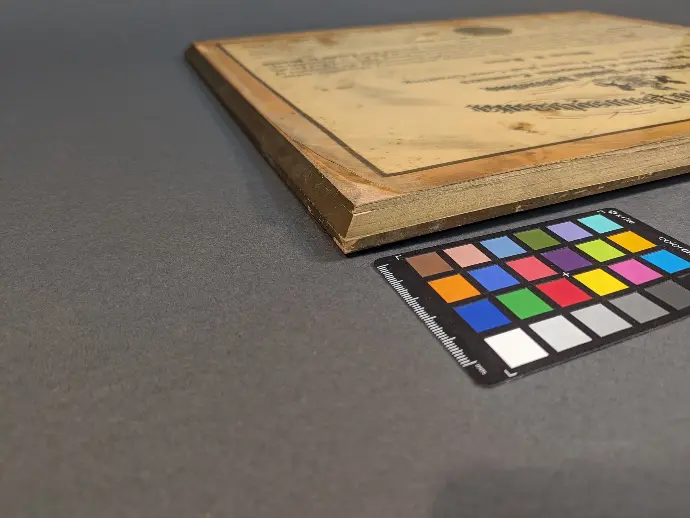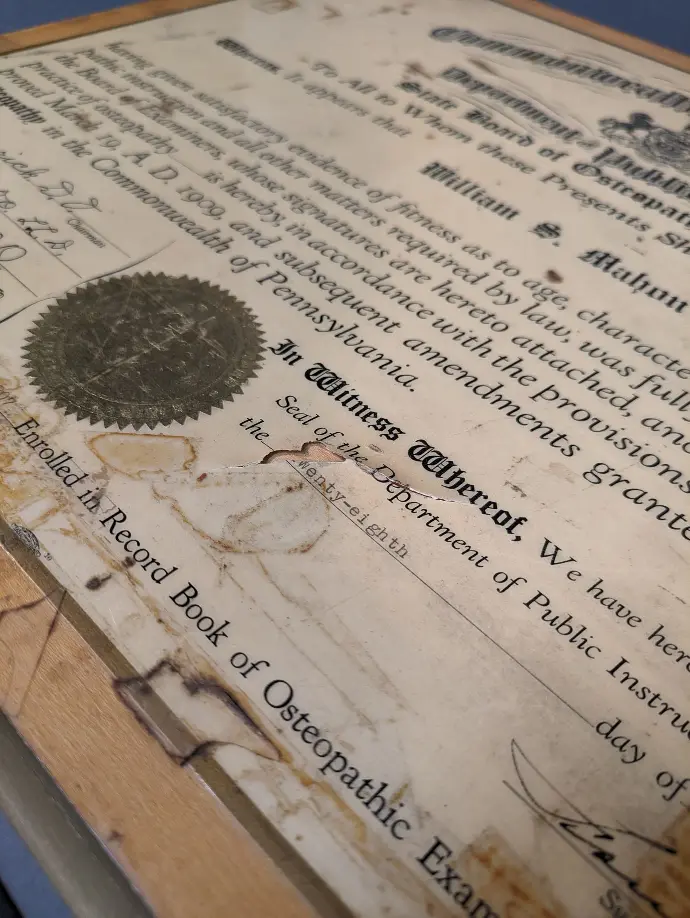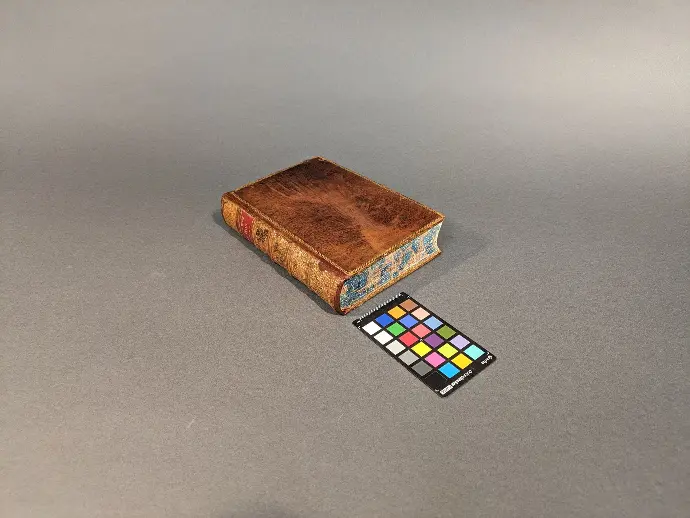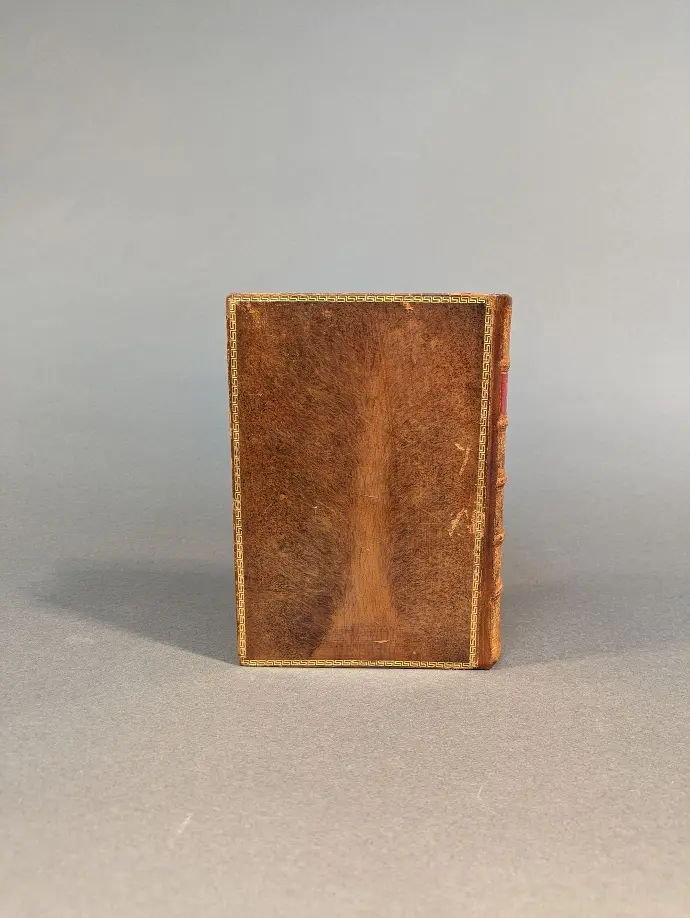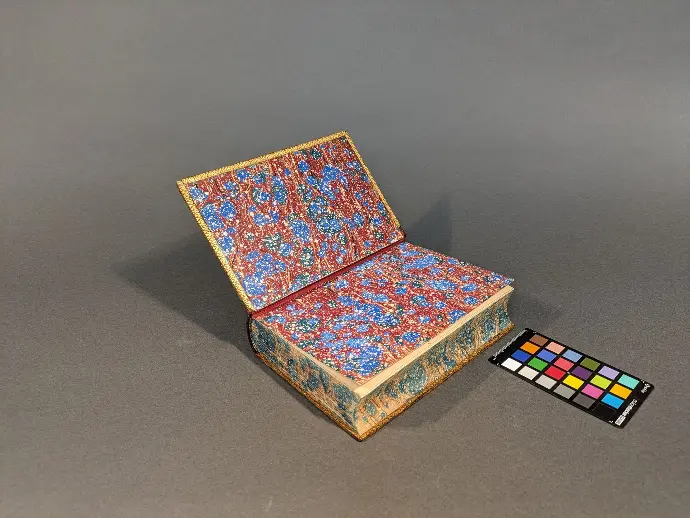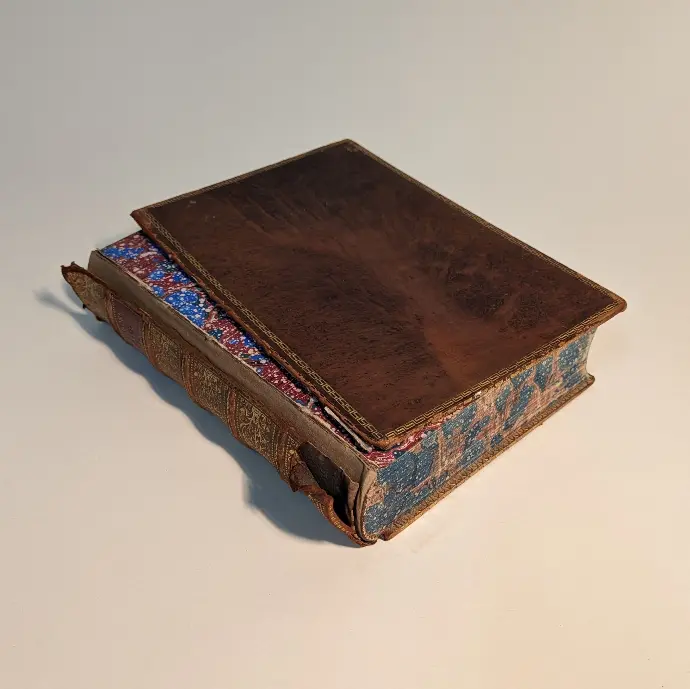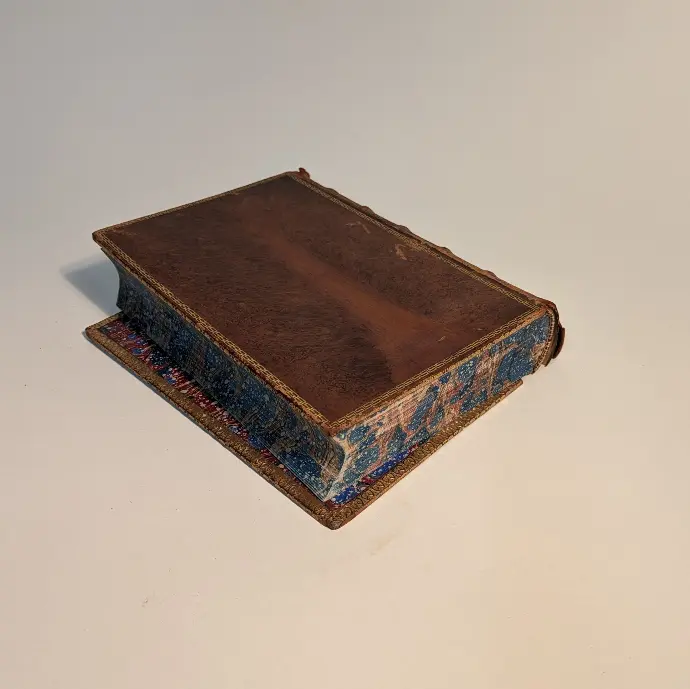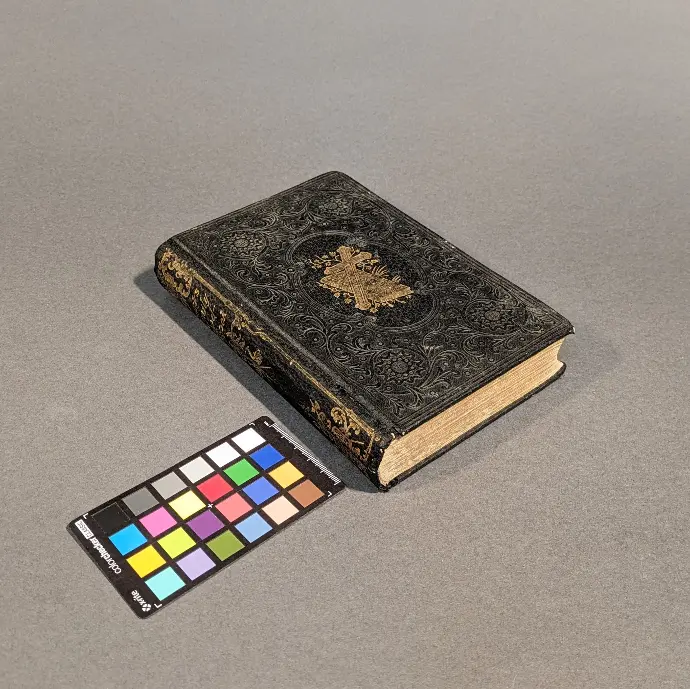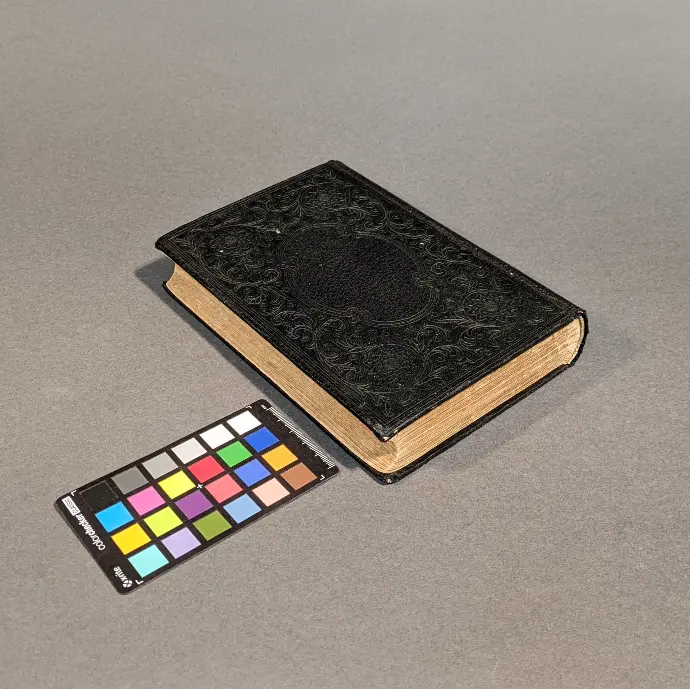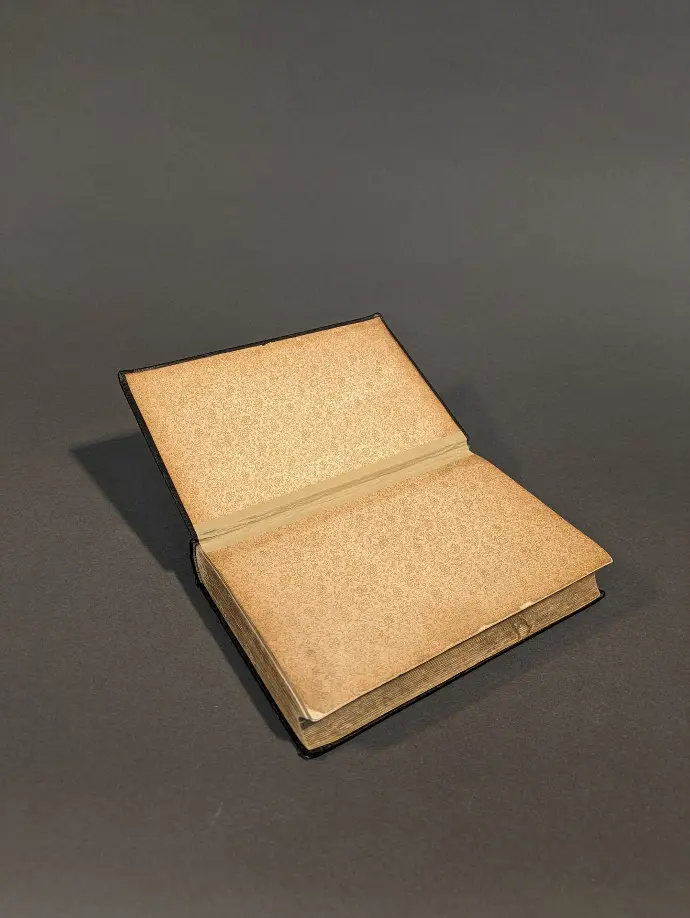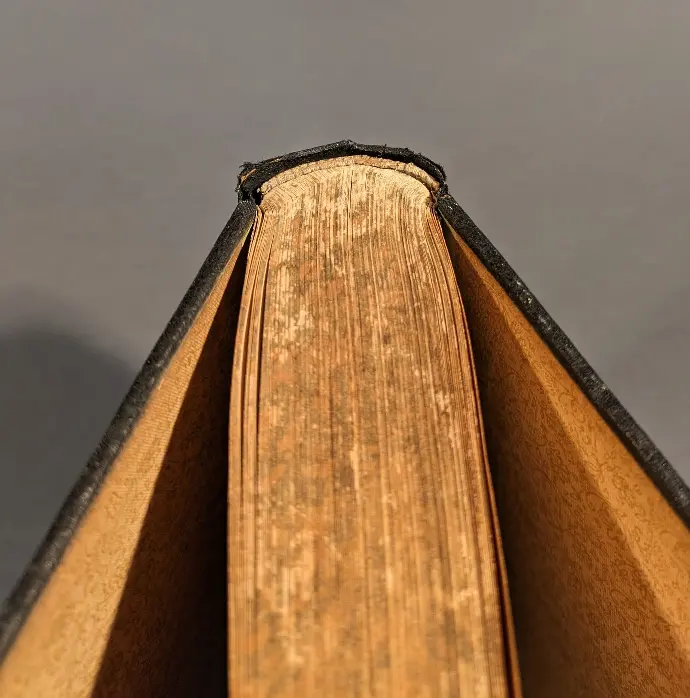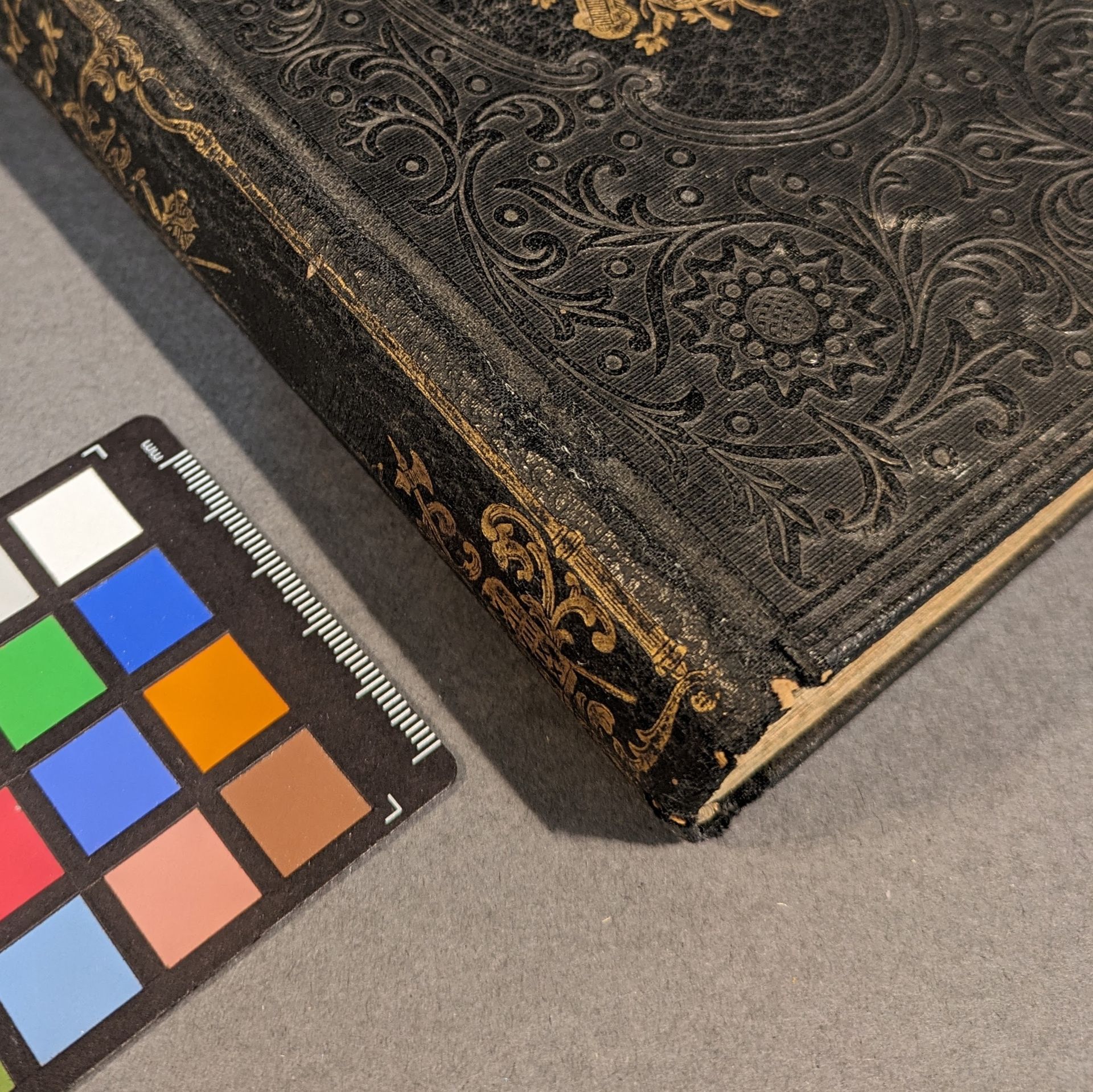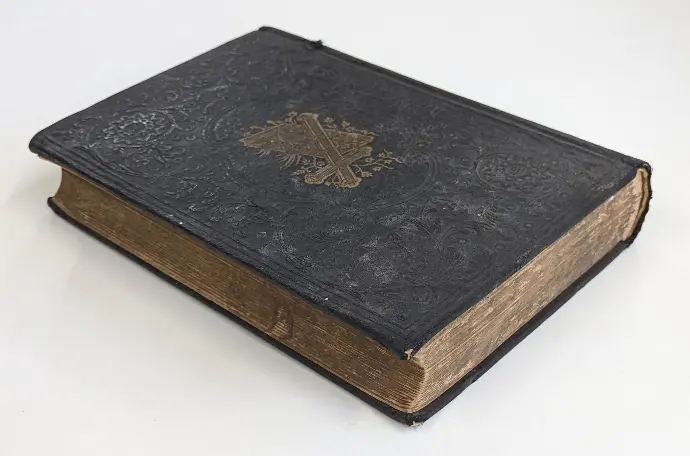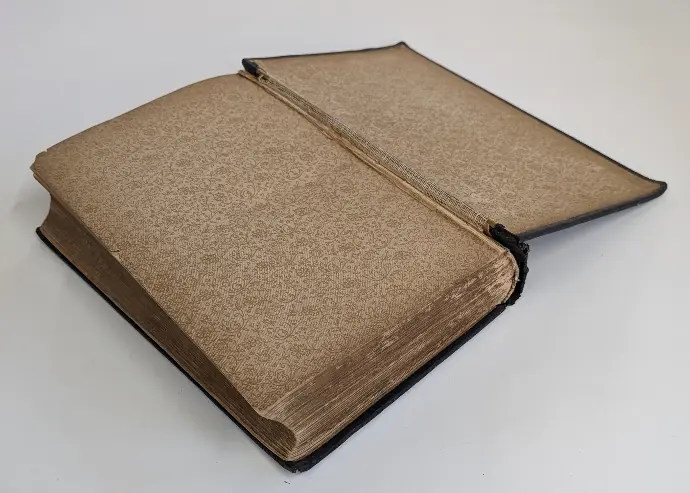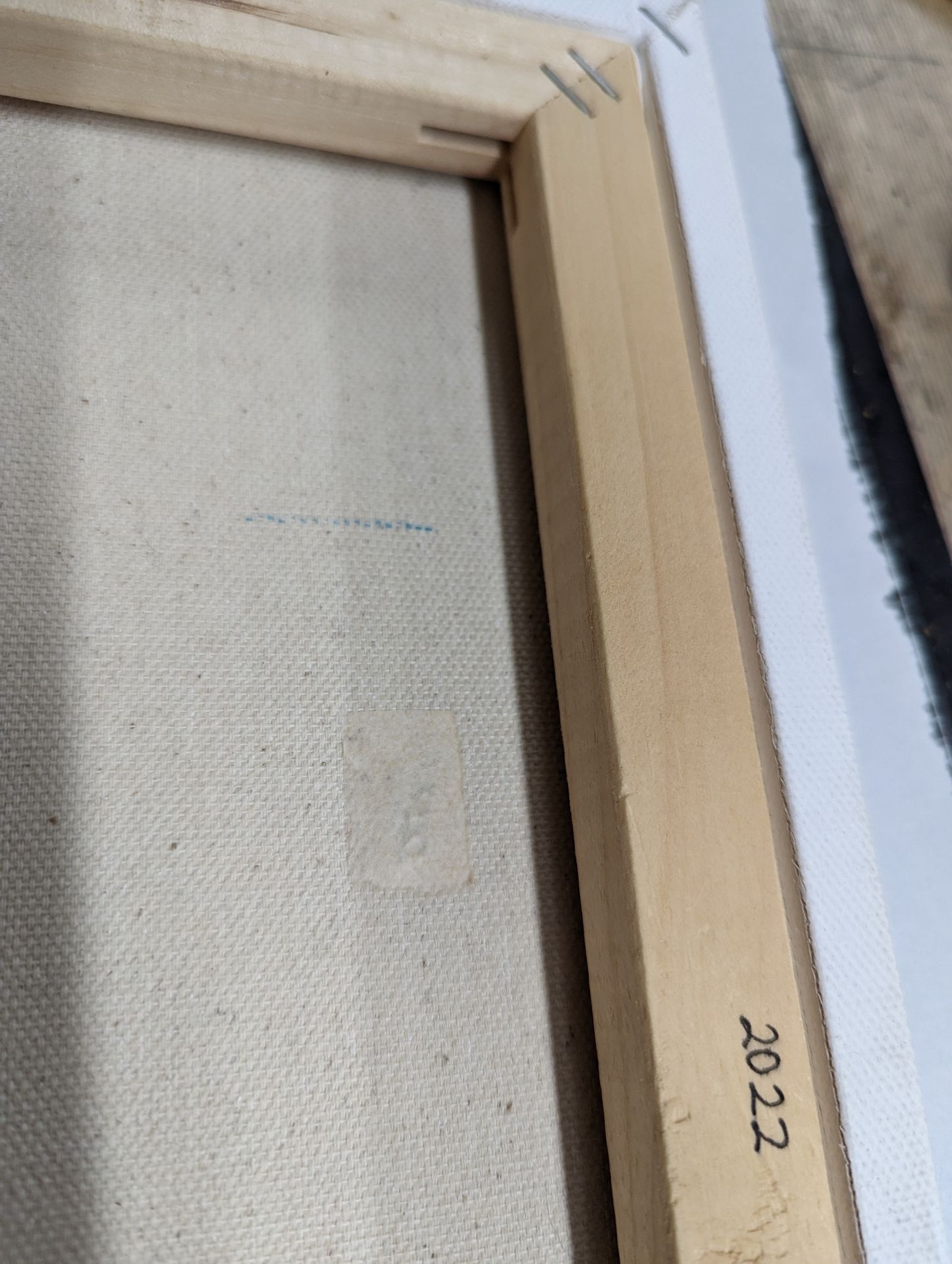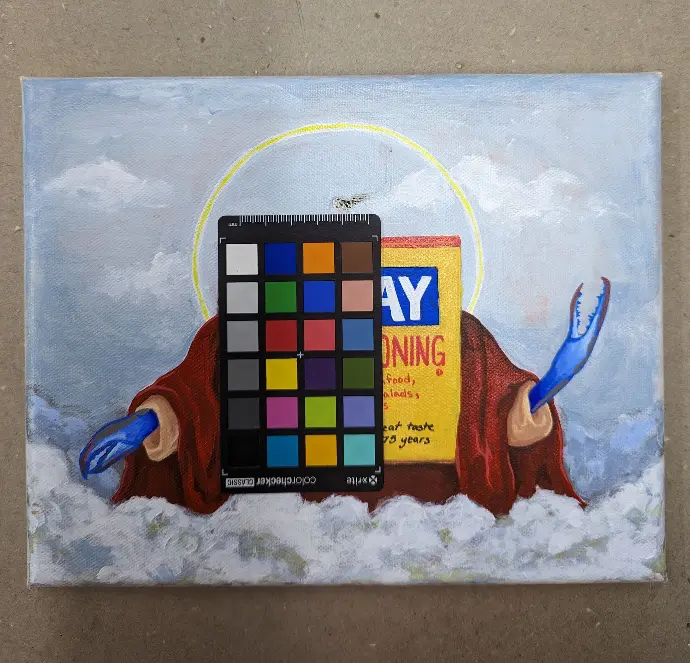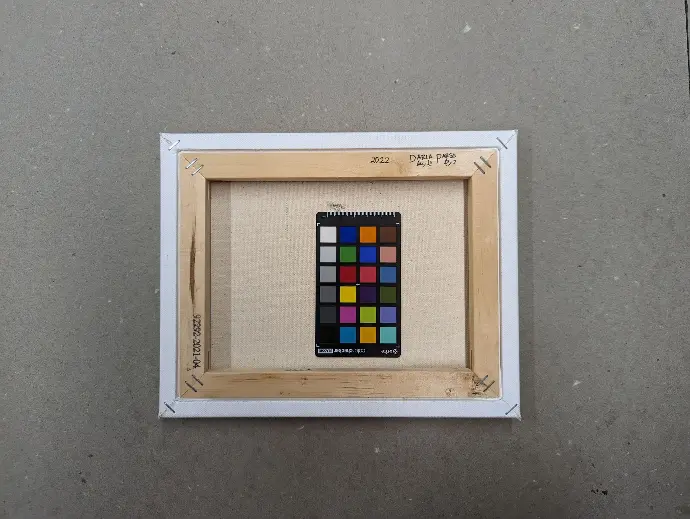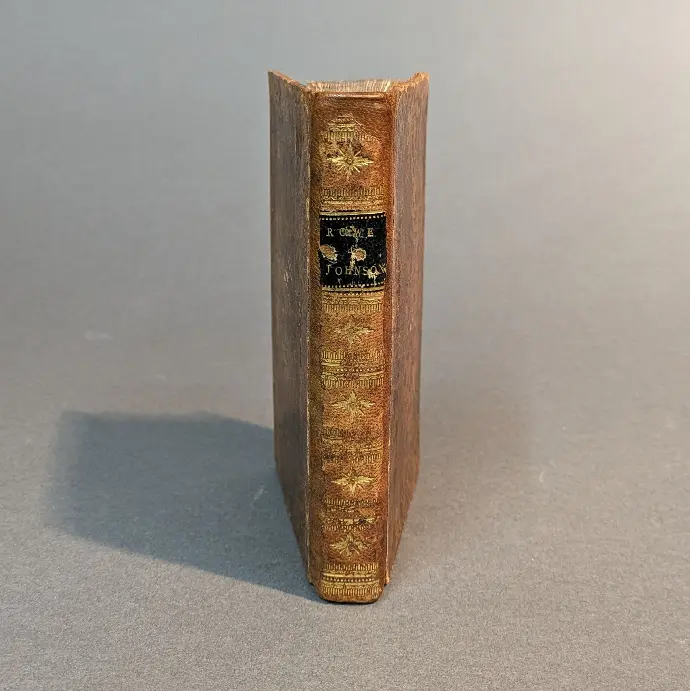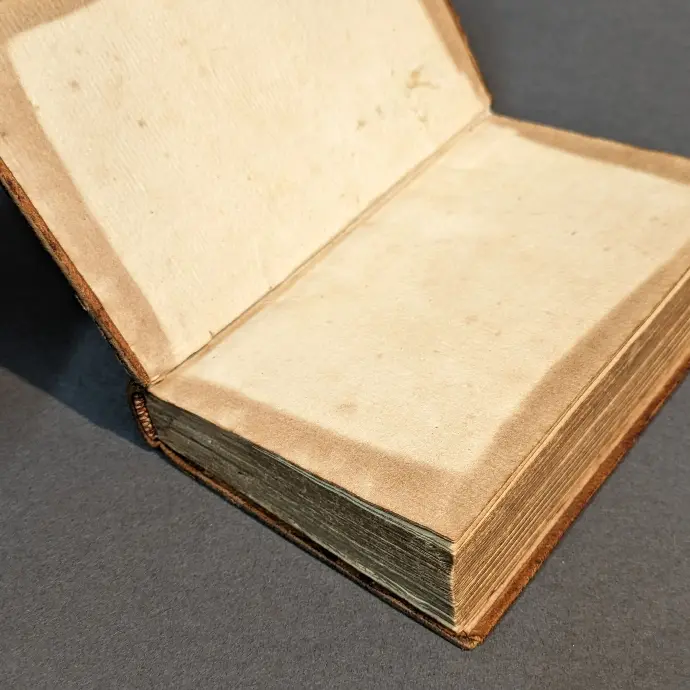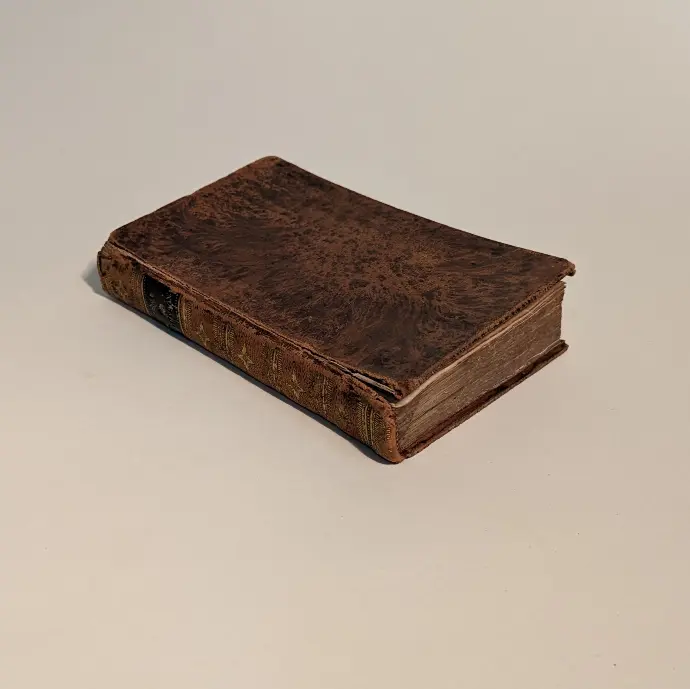Repair
Click on an image to jump to further details.
Little Women
These clients wished to surprise their mother with her repaired childhood favorite. As you can read and see in my condition report, treatment proposal & treatment plan, the book was in an abused state and required some attention to keep the issues from continued deterioration. With some thoughtful care, this book is ready to be handed down through the family once more as the heirloom it is.
Before
Laminated diploma
This diploma was one of two from a family interested in seeing if the diplomas could be removed from the lamination holding it to the board. With some investigation, I was able to discover that this was likely an artifact of the early craze for lamination when the technology was first being popularized. While I cannot identify it's specific material, the lamination is at least not an acetate, determined through applying a series of increasingly intense solvents—starting from watered propanol to pure ethanol—to test what would clean the surface and potentially lift the lamination without skinning the document, all conducted under the expert advice of book, paper & plastics conservator Cancy Chu. The safest intervention left to me was to simply re-adhere the lifted areas to the board and clean the surface as best as possible.
Before
Life & Work of St Paul
Courtesy of the generosity of Todd Pattison, conservator and advisor to the North Bennet Street School's bookbinding program, I received this text in need of cover and spine reattachment just in time for the leather rebacking workshop with conservator Jim Reid-Cunningham. By the end of the workshop, I had a text with a perfectly color-matched new leather spine supporting its formerly detached and breaking covers and spine. I enjoyed the process of lifting the leather on the covers, which proved a meticulous and resistant task given the crumbling of the flesh side of the very thin leather. The internal hinges are tissue toned to complement the red of the marbled end papers. Sometime while the front cover was detached, the paste down suffered a minor loss and abrasion, which I addressed with an acrylic touch-up in the same red tone.
Before
Daily Hand-Book with gilded cross
The client for this book desired only the treatment necessary for the book to function once more while still being attractively done. As you can read in my condition report, treatment proposal & treatment plan, the book structurally required reinforcing of the spine and toned tissue hinges in the inner front covers to resecure their attachment. Aesthetically, the front cover at the hinge needed a repair of a bit of torn cloth and the headbands consolidated. The book is now happily back in use.
Before
Old Bay painting
This client came to me with this charming painting made for her by a friend. With an impending visit from said friend, she needed the puncture in the canvas repaired so that the friend wouldn't notice. Since the reverse of the canvas would reveal that a patch had occurred and with documentation of the original state of the painting, I felt comfortable approaching this painting with the restoration lens requested by the client. Using the principles of rebuilding a deteriorated board for a book repair, I first salvaged what I could from the loose canvas threads, rearranging them to recreate the original weave. Then I added a small slurry of frayed out linen thread and paste to rebuild the back of the puncture to the same thickness as its surrounding canvas. Over this slurry, I pasted down a patch of Japanese tissue. For the front, I color-matched the losses and painted in the lost and abraded area.
Before
Another generous offering from program patron Todd Pattison, this book was a second go at the leather reback made during Jim Reid-Cunningham's workshop. This book offered the opportunity to learn how to address cupped boards that were still attached. Requiring minimal intervention, this book primarily received structural assistance through an inner tissue hinge and a new leather spine, both color-matched to blend into the book. In lifting the crumbling, thin leather on the rear cover, I broke through the leather and it promptly crumbled to fluff. To address the loss that I created and to another preexisting loss from the edge of the board , I used a period approach found in binderies of the time when they broke through their covering leather; I patched the areas with a new, color-matched piece of leather. The major departure from the historical approach was that, like with filling the above painting's loss, I filled the low area from the loss I inflicted with the frayed linen cord and paste slurry before applying the patch. The preexisting loss was worn smooth an event with the surrounding leather, so I deemed it unnecessary to fill any low areas before applying the patch.
